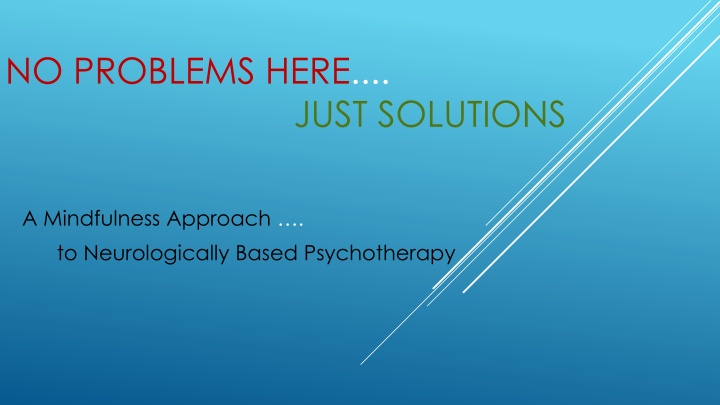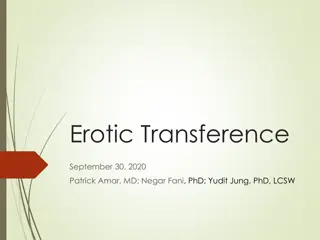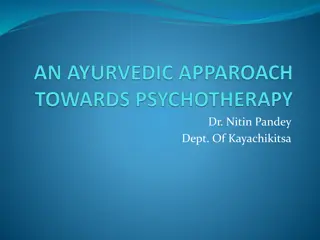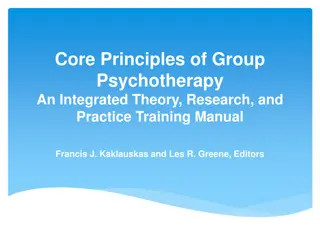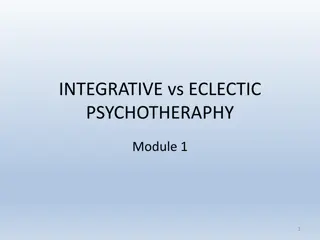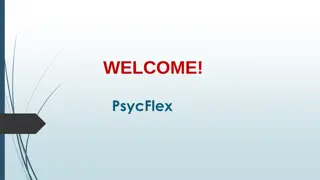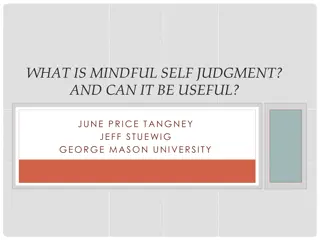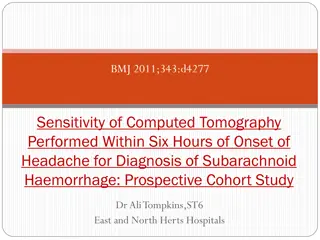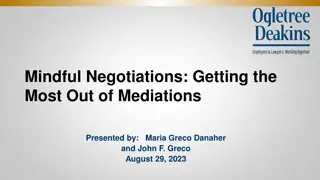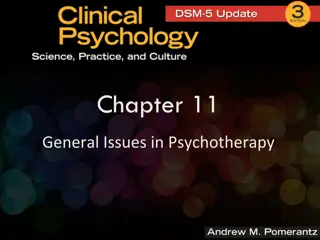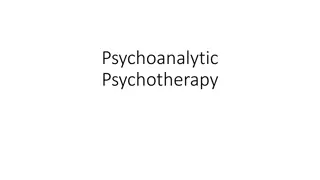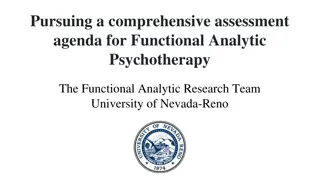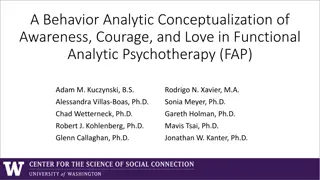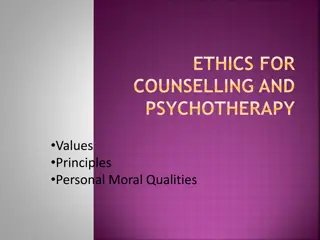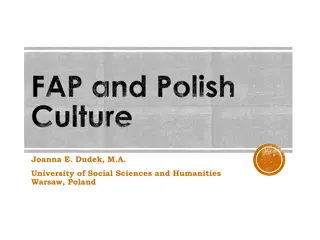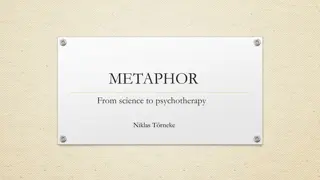Neurologically Based Psychotherapy: A Mindful Approach
Delve into the core assumptions and mechanisms driving solution-based treatment and the role of mindfulness in facilitating transformative change. Explore the intricate interplay between Western and Eastern perspectives on safety, attachments, goals, and narratives, all shaped by the continuous interaction of nature and nurture. Dive deep into the three brains - primitive, emotional, and cognitive - and understand how they influence our thoughts, emotions, and behaviors.
Download Presentation

Please find below an Image/Link to download the presentation.
The content on the website is provided AS IS for your information and personal use only. It may not be sold, licensed, or shared on other websites without obtaining consent from the author.If you encounter any issues during the download, it is possible that the publisher has removed the file from their server.
You are allowed to download the files provided on this website for personal or commercial use, subject to the condition that they are used lawfully. All files are the property of their respective owners.
The content on the website is provided AS IS for your information and personal use only. It may not be sold, licensed, or shared on other websites without obtaining consent from the author.
E N D
Presentation Transcript
NO PROBLEMS HERE.... JUST SOLUTIONS A Mindfulness Approach . to Neurologically Based Psychotherapy
(1) Danger Will Robinson, Danger! - Bing video SHORT VIDEO
Goals for Presentation: Reviewing the Basic Assumptions Identifying the necessary Neurological Mechanisms Exploring the effectiveness of Solution Based Treatment More than just finding a solution Understanding the effectiveness of Mindfulness in facilitating change of solutions in a bottom-up approach INTRODUCTION
Western (What and How) -Nature (what is) -Nurture (what gets created) -The interaction leads to safety, attachments, Goals, Strategies and Narratives PRECURSORS
Eastern (The nature of Reality) Life as Energy Presence & Awareness Energy as Yin and Yang The repetitive and absolute nature of reality. PRECURSORS
1stNATURE and NURTURE are constantly active and interactive 2ndThis interaction of Nature and Nurture create the CONTENT (what we think/do/say) and PROCESS (how we think/do/say) that we call learning, adapting, development and achieving. 3rdContent can change the Process and the Process can change the Content through ASSIMILATION, ACCOMMODATION, LEARNING, and NEUROPLASTICITY ASSUMPTIONS
Primitive Brain and Vagal Process Content (Anxiety, Rage, Sex, Familiarity, biological and concrete) Process (enduring, compelling, and without your permission) Emotional Brain Content (Negative, Neutral and Positive Attachments, Emotions, Values Process (Beliefs, short term rewards, detached long term outcome, with some level of permission: intensity level determines believability) Cognitive Brain Content (Goals, Knowledge and the stories we tell ourselves) Process (Implementation strategies, thinking including errors, cognitive mapping and dissonance management, with intention determining decisions and choice) THE THREE BRAINS
(Nature Nurture) provides the underlying mechanism/dynamics generating patterns that help us deal with life Example: Better sight Visual-motor learning occurs more readily (VML) Conditioned, practiced, copied or rewarded by outcomes Increased ease and scope of VML use Increased value/beliefs/narrative dependency Forming a solid repertoire of use EXAMPLE
(Nature Nurture) provides the underlying mechanism/dynamics generating patterns that help us deal with life Example: Curiosity leads to touching a hot stove Pain Receptors being triggered Reflex pulling hand away Conditioned & Rewarded by Relief of pain Learning not to touch a hot stove (touching pain) Forming a solid repertoire of use EXAMPLE
NERVOUS SYSTEM Significant Other Senses Behavior LIMBIC Amygdala: Flight Fight Freeze Faint Hypothalamus:Primary Drives, Growth and Calmness Hippocampus: Immediate Memory, Emotions, and Values Vagal Vagal Storage TPS Awareness Sorting Assigning Choosing Responding ARAS Arousal Vigilance Sleep Focus Attention Regulation DRAS Responding Coordinating Integrating Activity Social Meaning Short-Term Memory Retrieval Cortex Long term memory Analysis Rationality Logic
The brain never creates a problem (a neurological impossibility) Solutions are created by the patient and are situationally specific Solutions work repeatedly and become established Repeatedly triggered patterns become habitual and may generalize to similar prompting events A SOLUTION...NOT A PROBLEM
Innate and learned Cognitive (& intellectual), Emotional and Kinesthetic Patterns are SOLUTIONS to daily needs, wants and challenges in life. Interaction between Nature Nurture creates a need for Solutions Solutions relate to Safety, Attachments, Goals, Strategies and Stories (Vision) Solution execution involves Active (Yang) and Passive (Yin) energy, Awareness, Presence, Openness (honesty), and Repetition (Will) WHAT IS A SOLUTION?
Because Solutions are repetitively used, they become: -unconscious (automatic) -invisible (without obvious structure) -feel natural, familiar, compelling even if their effectiveness dwindles over time and because of these characteristics, Solutions require effort to change. HOW DO SOLUTIONS WORK 1
As a result of prompting events, the brain uses existing solutions or creates new ones, based on the Individual's developmental level Individual's skill set and prior experience External physical and social resources The outcome desired Target addressed (safety, attachment, understanding) Solutions accumulate over time and define the perception and response repertoire available to the individual. HOW DO SOLUTIONS WORK 2
Solutions accumulate over time and define the perception and response repertoire available to the individual at any given time. HOW DO SOLUTIONS WORK 2
Using the MEDICAL MODEL, you correct the existing problem. The stomach is not working effectively ...Ans: provide medication in to improve stomach function. The solution is not changed, it is improved or corrected Individual is depressed....RX an SSRI and improve the worry cycle of the brain. Depression cured. The medical model assumes that improving the neurology alone will reduce depression...and it usually does in many cases. What it does not address is: Pre-existing patterns that led up to a poorly functioning worry cycle Pre-existing patterns that made depression more likely Depression now feels normal and familiar, and the person avoids feeling differently Patterns of coping with depression cognitively, emotionally and vigilantly. DIFFERENCE BETWEEN PROBLEMS & SOLUTIONS
IN THE PSYCHOLOGICAL MODEL the Neurology requires you create a solution Example, Avoiding social events as a solution helped the 6-year-old feel safer in a new school. This allowed him to excel academically for which he was praised; with higher self- esteem in tow around the academic success, the youth concludes that social isolation is a good solution. And he continues to use avoiding as a solution. And His peers continue to expect isolation from the 6-year-old. As he moves through the grades, he continues to use this solution and he does not learn appropriate social skills. By college, this solution is causing him serious difficulty, but he does not know how to change it and he has accepted the story that he has told himself to reduce dissonance. He is simply a nerd and people don t like him. Different behavior: 18-year-old with ADHD who is isolated from classmates in high school and totals his car wrapped around a tree, gets arrests for DUI and gets into fights in school with bullies in senior year. DIFFERENCE BETWEEN PROBLEMS & SOLUTIONS
Solutions are cognitive, emotional and primitive patterns that help the individual to deal with life from moment to moment in a perceived effective manner. SOLUTIONS ARE PATTERNS SOLUTIONS ARE PARTS SOLUTIONS ARE ROLES SOLUTIONS ARE LOOPS A ROSE BY ANY OTHER NAME
Loops have a content and process The Content of Loops is best described by Lane Pederson's Visual Behavior Change Model. This model is part of his version of Dialectical Behavior Therapy and is used to help patients learn how to change their own ineffective behavior patterns. The process of Loops is best described by Beverly Coghlan and Mark Webster in Loops: An Applied Functional Contextual Approach to Health Behavior Change. LOOPS
Benefits of using a Solution based approach You can ask the person To tell you how they resolved an issue with the Solution at hand What outcome they were looking for For unanticipated results or conclusions How well the solution worked and why Whether there were times the loop made things worst How old they think they were at the point of solution creation How they would change the solution so that it works better How they would create a new solution in its place You can praise them for creating and/or accepting the solution for themselves You can coach them in clarifying, resolving and changing the Solution. PATIENT SKILLS REQUIRED
Benefits of using a Solution based approach You started with the content of a Solution... and end better understanding how it works Patient starts with not knowing the problem was a solution... And ends understanding the elements of the solution... Brainstorming how to change it or create a new one... And learning the process of problem solving and change. "Give a man a fish, feed him for a day; teach a man to fish, feed him for a lifetime." PATIENT SKILLS REQUIRED
Prompting Event Action Urge Outcomes Vulnerabilities Surface Emotions Underlying Emotions Self-talk Action VISUAL BEHAVIOR CHANGE MODEL
Unwanted feelings, thoughts/physical sensation: Anxious, shaky, "they'll think I'm boring" Behavior: I don't to the party Long-term Vulnerability: More anxiety, depression, low confidence Short-term Outcome: I feel less anxious EXPERIENTIAL AVOIDANCE Long-term Vulnerability: Life of Isolation and poor relationships DYNAMICS OF LOOPS
The Neurological dynamics of LOOPS Create a solution that address most easily and directly the event with minimal cost Immediate outcome supports the Loop Long term outcome is ignored and often is the target of Obsessions and scolding. Scolding re-enforces the notion that the Loop is too difficult to change. DYNAMICS OF LOOPS 2
Man in the subway! SAMPLE PATIENT LOOP (TRAUMA BASED
Chinese Proverb: Give a Man a Fish, feed him for a day: Teach a man to fish, feed him for a lifetime . Mindful Strategy focuses on what is real and what works. Mindful Strategy focuses on accepting reality both psychological and phenomenological Mindful Strategy focuses on honesty and being opened to the possibility that you are wrong. Mindful Strategy focuses on what process we can change that will make us more effective. Focus in on being effective in our life, based on what we want as long as what we want is honest (in line with reality). This is a pragmatic view of life FOCUS ON THE PROCESS NOT THE CONTENT
Energy is what initiates and sustains thinking, saying and doing. Energy can be about action or inaction. How we practice the use of energy becomes a loop which defines our disposition and destiny NATURE OF ENERGY
The concept of Energy is best operationalized by Yin and Yang. Yang is the strong energy that leads to action. It is the DOING FORCE; Yin is the soft energy that permits us to allow. It is the ACCEPTING FORCE. In Western culture, Yin Yang is best illustrated by the Serenity Prayer: God grant me the serenity -To accept the things I cannot change, -The courage to change the things I can, -And the Wisdom to know the difference. -Living one day at a time, -Enjoying one moment at a time. NATURE OF ENERGY
POLYVAGAL THEORY STEPHEN W. PORGES TREATMENT OF TRAUMA, JANINA FISHER
